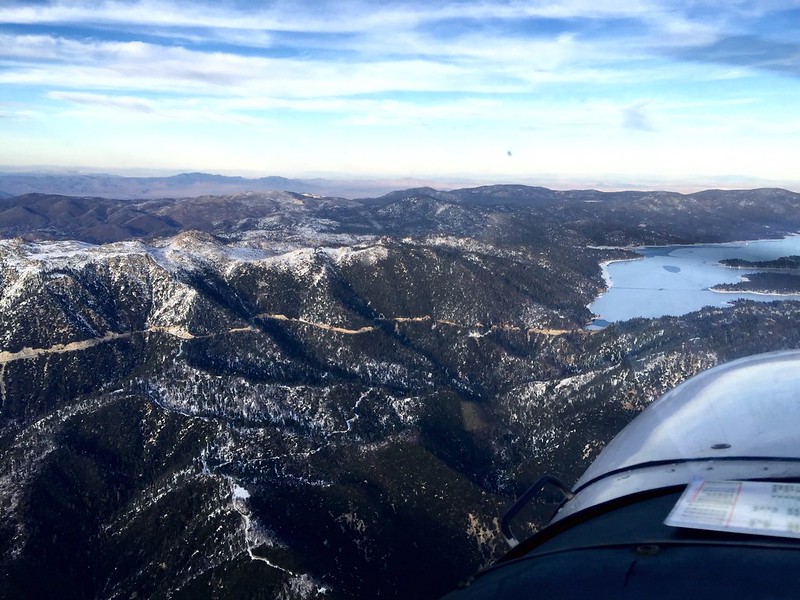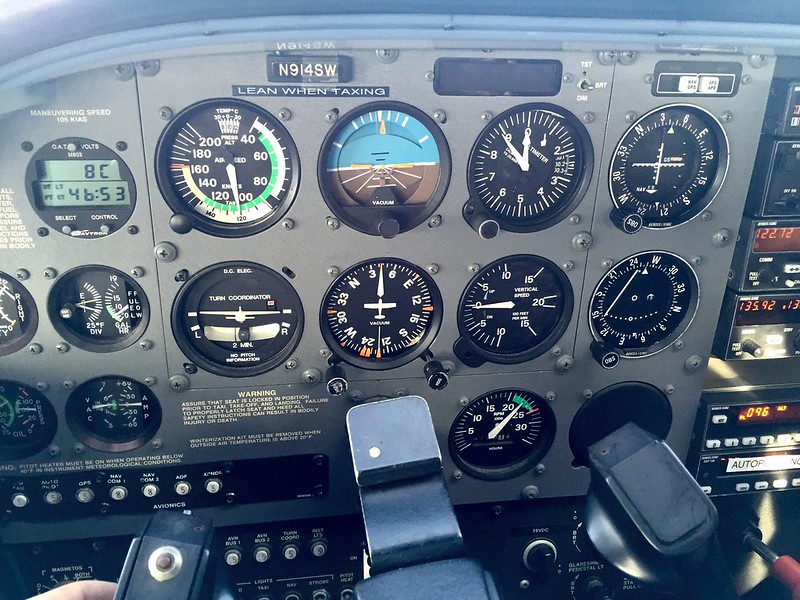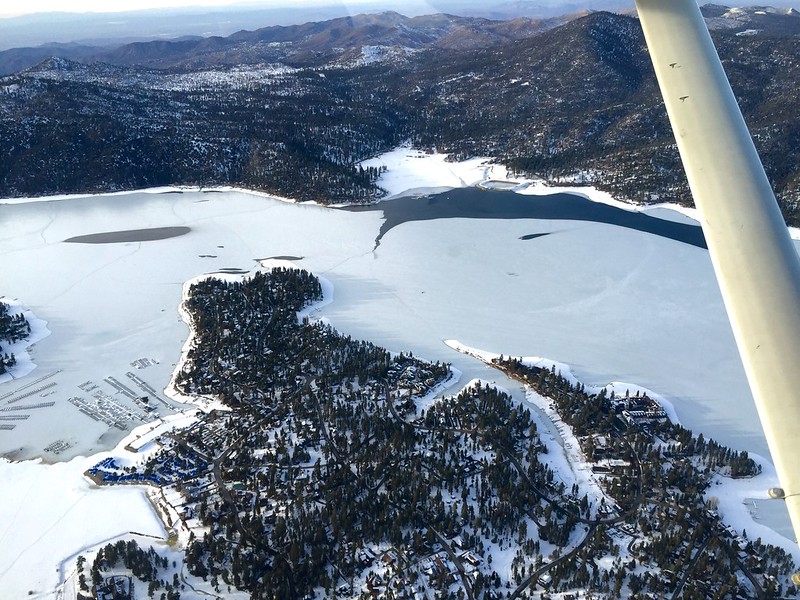iWantWings
Pre-takeoff checklist
The flight school I rent from has a policy that requires aircraft renters to be "checked out" for flying to 2 airports: Catalina (KAVX, on an island) and Big Bear (L35, mountainous, ~6,750 feet).
I think the policy is derived from the terms and conditions of the flight school's insurance company. So, as I understand it, if a pilot (for example, a certificated private pilot) crashes while flying the school's rented plane to any of these two airports, one of the first things the insurance will check is the pilot's "checkout" status for the particular airport.
Be that as it may, yesterday I did the checkout for Big Bear and it was great: the 1-hour ground lesson (density altitude and its effect on aircraft performance, the effect of terrain on winds, flying through canyons, etc.) was common sense, but it was tailored for the airport. The flight itself was lots of fun; it did keep me busy. It was also for the first time that I got to 10,000 feet for a brief time (wanted a bit of AGL buffer near some tall peaks)



The flight was in a C172 "S" model; the 180HP IO-360 is smooth and had good climb performance (don't laugh, I'm only comparing it with other 150-160 hp C172 and the 85 hp yellow plane).
I think the policy is derived from the terms and conditions of the flight school's insurance company. So, as I understand it, if a pilot (for example, a certificated private pilot) crashes while flying the school's rented plane to any of these two airports, one of the first things the insurance will check is the pilot's "checkout" status for the particular airport.
Be that as it may, yesterday I did the checkout for Big Bear and it was great: the 1-hour ground lesson (density altitude and its effect on aircraft performance, the effect of terrain on winds, flying through canyons, etc.) was common sense, but it was tailored for the airport. The flight itself was lots of fun; it did keep me busy. It was also for the first time that I got to 10,000 feet for a brief time (wanted a bit of AGL buffer near some tall peaks)



The flight was in a C172 "S" model; the 180HP IO-360 is smooth and had good climb performance (don't laugh, I'm only comparing it with other 150-160 hp C172 and the 85 hp yellow plane).


